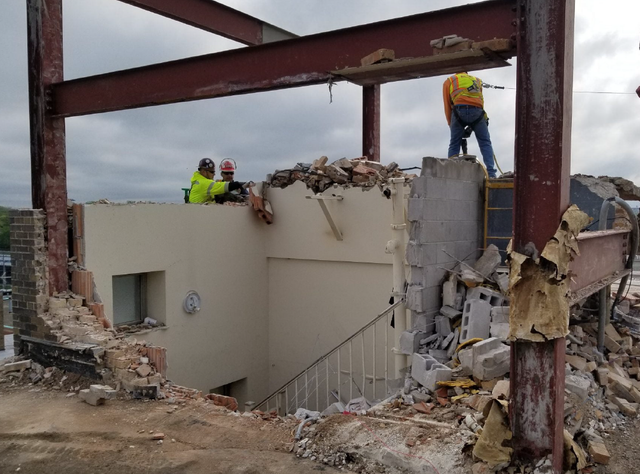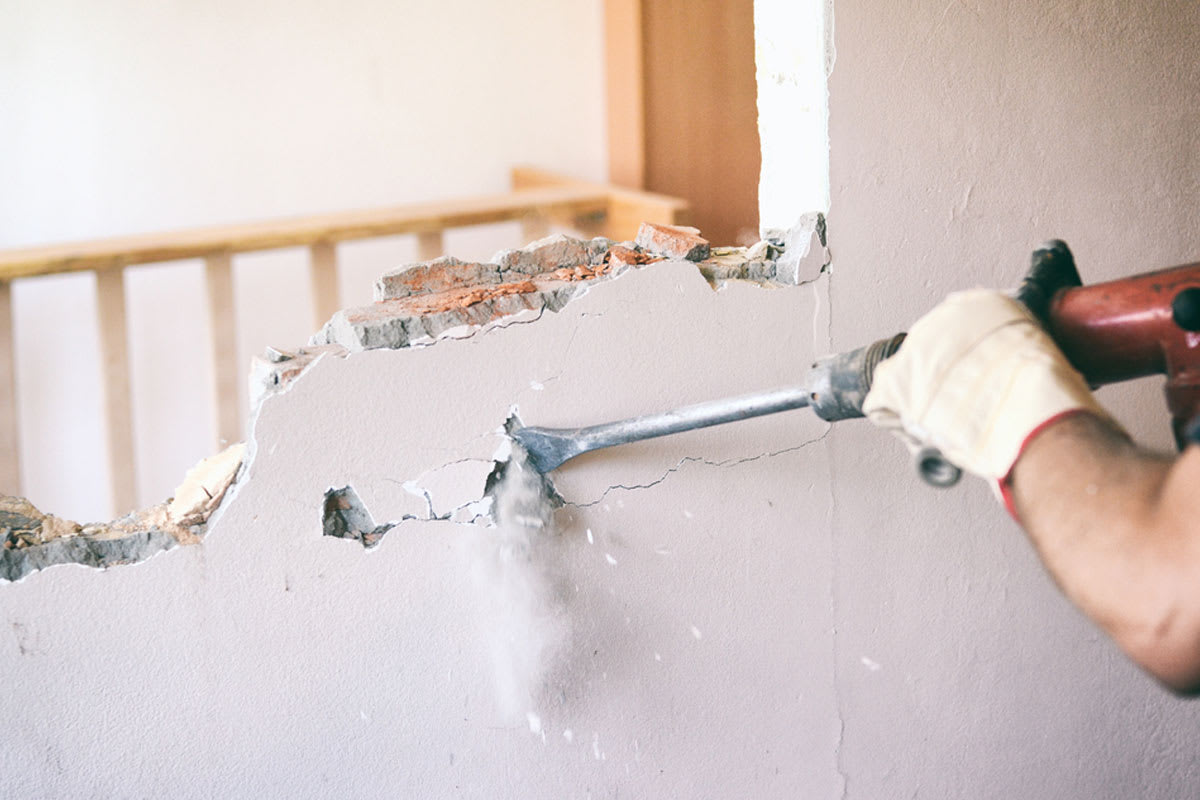Optimizing Space Via Strategic Interior Demolition Planning
Optimizing Space Via Strategic Interior Demolition Planning
Blog Article
The Ultimate Guide to Inside Demolition Techniques and Devices
Within the realm of interior renovations, the art of demolition is a crucial stage that needs accuracy, ability, and the right collection of tools. Whether you are a seasoned professional or a DIY fanatic, comprehending the ins and outs of indoor demolition methods can make all the distinction in attaining an effective project end result. As we browse via the nuances of this extensive guide, we will certainly discover crucial tools, safety and security measures, and professional methods that are vital when starting the journey of transforming a space. Stay tuned to discover the essential understandings that can boost your demolition prowess to new heights.
Vital Indoor Demolition Tools
When taking on interior demolition projects, having the suitable devices is vital for performance and safety and security. One of the most vital devices for interior demolition is the demolition hammer. This durable device is designed to damage through challenging products like concrete, drywall, and ceramic tile. Its effective hammering activity can swiftly demolish wall surfaces, floors, and other frameworks. Additionally, a crowbar is crucial for eliminating fixtures, trim, and other products. Its take advantage of permits the very easy extraction of nails and other fasteners without harming the surrounding surfaces - interior demolition.
An additional vital tool is a reciprocating saw, which is ideal for puncturing a selection of products such as plastic, metal, and timber. Its ability to make exact cuts in limited rooms makes it ideal for demolition work. Additionally, an utility knife is required for cutting materials like carpeting, plastic flooring, and insulation. Its sharp blade makes certain accurate and clean cuts, assisting in the removal of unwanted products. On the whole, having these necessary interior demolition devices will significantly enhance the efficiency and security of any demolition task.

Security Safety Measures Throughout Demolition

Additionally, all workers included in the demolition process must obtain adequate training on the proper handling of devices and devices to lessen mishaps. By adhering to these safety precautions, interior demolition projects can be lugged out successfully while focusing on the well-being of all people included.
Techniques for Getting Rid Of Wall Surfaces
Executing correct safety precautions throughout interior demolition jobs is essential for producing a secure working atmosphere, and one vital element of such projects entails understanding strategies for getting rid of walls. One generally view it now used technique is manual demolition, which calls for the usage of basic hand tools such as sledgehammers, crowbars, and utility blades to very carefully take apart the wall piece by item. This strategy enables for greater control over the demolition process, specifically in fragile locations where accuracy is essential.
For bigger, a lot more complex walls, mechanical demolition may be necessary. This includes utilizing hefty machinery like excavators or excavators to knock down wall surfaces effectively. However, it is important to make certain that the structural integrity of the building is not jeopardized throughout mechanical demolition.
One more strategy for getting rid of walls is deconstruction, where the wall surface is taken apart in a means that maintains multiple-use products. This sustainable technique is environmentally pleasant and can additionally aid reduce disposal costs. Whichever strategy is used, it is vital to comply with proper security protocols and consider the structural ramifications of wall removal to guarantee an effective interior demolition job.
Removing Floor Covering Like a Pro
Effectively getting rid of flooring during indoor demolition needs the appropriate tools and methods to make certain a smooth and successful procedure. The very first step in removing flooring is to get rid of the area of any kind of furniture or challenges. Next, identify the sort of flooring to identify the proper removal technique. For hardwood or laminate flooring, beginning by getting rid of the walls and after that utilize a flooring scrape to lift and remove the planks. Rug elimination includes reducing the carpeting into convenient areas and rolling it up for disposal. For tile or vinyl floor covering, a carve or flooring scrape can be used to pry up the tiles or sheets. It's necessary to wear safety gear such as handwear covers, goggles, and a mask to protect against injuries and direct exposure to dust and debris. In addition, having a dumpster or marked disposal location prepared for the gotten rid of flooring materials is essential for keeping a tidy work environment. By complying with these methods and using the right devices, getting rid of floor covering like a pro can be accomplished successfully and successfully.
Appropriate Waste Disposal Techniques
After successfully removing floor covering utilizing the suitable tools and strategies, the next essential step in the indoor demolition process is implementing correct waste disposal techniques. Appropriate waste disposal is important for preserving a tidy and safe work environment throughout and after demolition.

Specialists should stick to neighborhood laws pertaining to waste disposal to avoid fines and penalties. Utilizing specialist waste management solutions can simplify the disposal procedure and guarantee compliance with ecological standards. By applying correct garbage disposal methods, indoor demolition jobs can be completed efficiently and sustainably.
Conclusion
In conclusion, interior demolition calls for the use of necessary devices and strict safety and security precautions to guarantee a successful and safe process. By complying with these standards, interior demolition can be completed properly and with very little dangers.
One of the most critical devices for indoor demolition is the demolition hammer (interior demolition). Generally, having these vital interior demolition devices will significantly improve the performance and security of any kind of demolition job
Successfully getting rid of floor covering during interior demolition requires the appropriate tools and methods to make certain a effective and smooth procedure.After efficiently removing floor covering making use of the appropriate devices and techniques, the following vital step in the indoor demolition process is applying proper waste disposal techniques.In final thought, indoor demolition calls for the usage of important tools and strict safety precautions to guarantee a risk-free and successful procedure.
Report this page